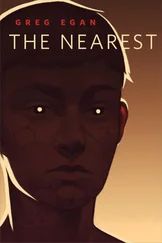One of the many approximations made by the modellers involved the quantum state of the protein, which was described mathematically in terms of eigenstates for the bonds between atoms: quantum states that possessed definite values for such things as the position of the bond and its vibrational energy. A completely accurate description of the protein would have allowed each of its bonds to exist in a complex superposition of several different eigenstates at once, a state that possessed no definite angles and energies, but only probabilities for a spectrum of different values. Ultimately, the protein as a whole would be seen as a superposition of many possible versions, each with a different shape and a different set of vibrational modes. However, to do this for a molecule with more than ten thousand atoms would have meant keeping track of an astronomical number of combinations of eigenstates, far beyond the capacity of any existing hardware to store, let alone manipulate. So it was routine practice for the most probable eigenstate for each bond to be computed, and from then on taken to be the only one worth considering.
The trouble was, when the São Paulo protein was bound to DNA, many of its bonds had two main eigenstates that were equally probable. This left no choice but to select the state of each bond at random: the software tossed several thousand dice, and singled out a particular conformation of the molecule to analyse. And in the first test tube experiments, nature had appeared to be doing virtually the same thing: when the strands of DNA had been copied with random errors, SPP had seemed to be merely amplifying quantum noise when it chose a different base to add to the new strand. But the near-perfect copying of the fruit pigeon chromosome, and the successive intergenerational changes in the DNA from the Suresh butterfly specimens, showed that something far subtler was going on.
The crucial subtlety, Furtado claimed, was that none of the probabilities that controlled the shape of the protein really were precisely equal. One or the other would always be favoured, though the balance was so fine that the choice would depend, with exquisite precision, on the entire quantum state of the strand of DNA to which the protein was bound. Furtado conjectured that SPP was exploiting this sensitivity to count the numbers of various ‘counterfactual cousins’ of the DNA: similar, but non-identical sequences that might have been produced in its place, if only its recent history of random mutations had been different. If the most numerous cousins dictated the sequence of the new copy of the DNA, that explained why the mutations weren’t random, why they never killed or disadvantaged the organism. They’d been tested, and found to be successful: not in the past, as Grant had hypothesised, but in different quantum histories.
Prabir looked up from the notepad. ‘I don’t know what to say. Nobel prize-winning physicists have been throwing rotten fruit at each other for a hundred years over interpretations of quantum mechanics, and as far as I know they’re still at it. Nobody has ever resolved the issues. If Furtado thinks the Many Worlds Interpretation is right, there’s a long list of famous physicists who’d back him up, so who am I to argue? But drawing information from other histories is something different. Even most believers would tell you it could never be done.’
Grant said, ‘That’s pretty much my own feeling.’ She leant over to see how far he’d read. ‘There’s some interesting speculation later on, suggesting the kind of data analysis the protein could be performing to extract the interference patterns between the DNA and its cousins from all the noise produced by thermal effects. If any of it’s true, though, SPP must have evolved into a veritable quantum supercomputer.’
Prabir scrolled down and glanced over the section she’d described; most of the equations were completely over his head, but there were passages of text he could follow. Although the Hilbert space in which the pure states reside cannot be reconstructed with certainty, it has been shown theoretically for simpler systems [Deutsch 2012, Bennett 2014] that an exhaustive search for global entropy minima over the unknown degrees of freedom can identify probable candidates in polynomial time by exploiting quantum parallelism .
Could a very bad quantum supercomputer have found a gene for a slightly better one? And so on? Furtado was claiming as much, but in the final section of the article he admitted that it was impossible to prove this directly; modelling any version of the São Paulo protein to the necessary level of precision was out of the question. He was, however, planning an experiment that could falsify his hypothesis: he was synthesising a copy of one of the fruit pigeon chromosomes, right down to the methylation tags. This molecule would be identical to the biological chromosome in both its raw sequence of bases and every known ‘epigenetic’ chemical subtlety, but its quantum state would not be correlated with that of the DNA in any living bird, real or counterfactual. If SPP copied this with the same low error rate as the natural version, Furtado’s flamboyant theory would go down in flames.
‘If this were true,’ Prabir mused, ‘it would explain a lot of things. You yourself admitted that Teranesia looked like a place where relatives of the locals, who’d parted company and co-evolved elsewhere, were being gradually reintroduced. If Furtado is right, that’s exactly what’s happened. Only they parted company when different mutations put them into different quantum histories, and they’re being “reintroduced” via a gene that goes out of its way to steal ideas from the most successful members of the family.’
Grant smiled indulgently. ‘Explain the fruit pigeons, then. And the barbed-wire shrubs. What’s going on with the camouflage, and the thorns?’
Prabir pondered this for a while. ‘It’s a counterfactual defence. Once you have the São Paulo gene, you can block predators that have never even tried to prey on you, in your own history . And so long as you maintain the defence, they won’t bother evolving in that direction, because they can see that there’s no point. It’s like a simple chess program: no elaborate strategies copied from grand masters, just the power to look ahead a few moves and assess the consequences. If brute force computation reveals a strategy — like castling, say — that gives a medium-term advantage over all possible moves by its opponents, the program will use it. And it will never reverse it, even if there’s no immediate threat, because it can look far enough ahead to see that any back-down would be exploited.’
Grant was beginning to look slightly uncomfortable. ‘You don’t seriously believe that’s what’s happening, though?’
‘Absolutely not. He’ll run the experiment on the synthetic chromosome, and prove himself wrong.’
Grant made a half-hearted sound of agreement, as if she was afraid that excessive confidence might be tempting fate.
Prabir said, ‘I meant to ask you: did you get the results of the RNA analysis of the dormant adults?’ The last he’d heard, it had been running overnight.
‘Yeah. There’s a peptide being produced that’s virtually identical to a well-known hormone that puts the adults of certain temperate species of butterflies into diapause when they hibernate over winter. And the alteration in the texture and pigmentation of the wings seems to have followed from a cascade of gene activity very similar to one that happens in ordinary metamorphosis. It’s all pretty much what I’d expected: just a few existing tricks redeployed.’
‘OK. But redeployed to what end? I know it’s pointless now, because the adults have already laid their eggs externally, but could this be a throwback to a species that used to reproduce via parasitic larvae?’ Maybe the gene resurrection idea could still be salvaged, after all.
Читать дальше
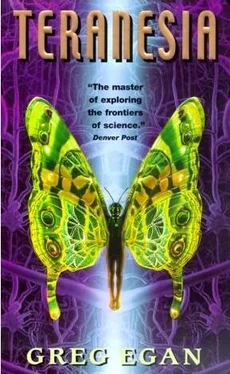
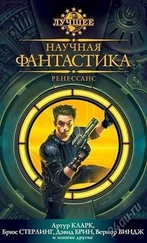
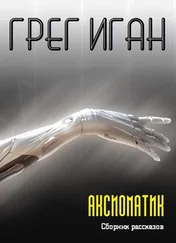


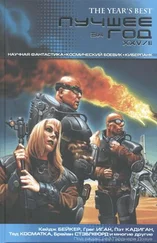


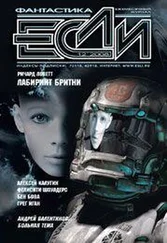

![Грег Иган - Рассказы [компиляция]](/books/419837/greg-igan-rasskazy-kompilyaciya-thumb.webp)
